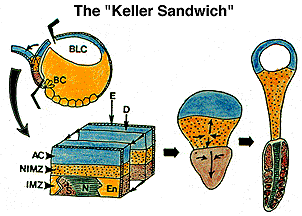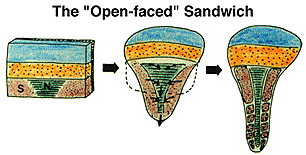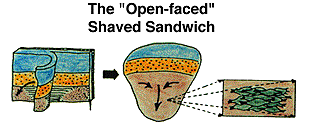

There are several types of Keller sandwiches, and different types of sandwiches are used to demonstrate different properties of the marginal zone. The different types are:
The traditional Keller sandwich: in this type of sandwich, a strip of involuting marginal zone, non-involuting marginal zone, and animal cap is excised from one embryo. Next, a second such strip from a second embryo is excised. Then these two strips are placed "back-to-back", so that the deep cells of the IMZ, NIMZ, and animal cap from one strip are in direct contact with the deep cells of the corresponding region from the other strip. The two strips then heal into a long strip, with deep cells in the interior and superficial cells on the outside.

The "open-faced" sandwich. In this case, a single strip is excised. Thus in this case a layer of deep cells is exposed to the external environment so that we can see it. However, because the deep cells form several layers, we still cannot see deep cells that are in direct contact with superficial cells.

The "shaved, open-faced" explant allows us to see the deep cells immediately in contact with the superficial cells. In this case, most of the deep cells are peeled away, leaving the superficial cells and a single layer of deep cells.
